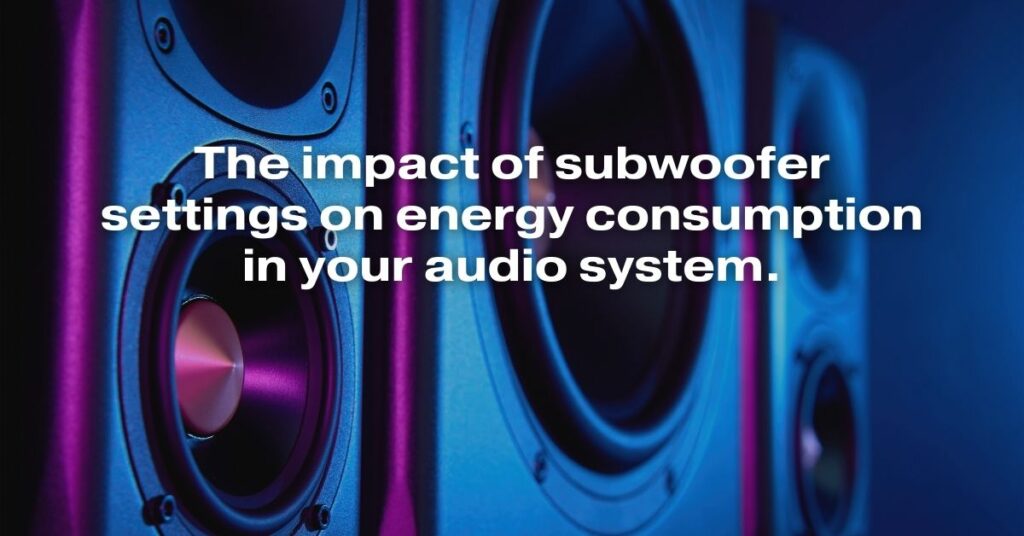Subwoofers are an essential component of any home theater or music system, adding depth and impact to the audio experience. However, they can also be one of the most energy-consuming components in your setup. This article will explore the impact of subwoofer settings on energy consumption and provide tips on how to optimize your subwoofer for both performance and efficiency.
Understanding Subwoofer Power Consumption
Subwoofers, like any other electronic device, consume power to operate. The amount of power consumed depends on several factors, including the subwoofer’s size, power rating, and usage patterns. Larger subwoofers with higher power ratings generally consume more power than smaller, less powerful models. Additionally, subwoofers that are used frequently or at high volumes will consume more power than those used sparingly or at lower volumes.
Impact of Subwoofer Settings
Several subwoofer settings can directly impact energy consumption. These include:
-
Volume: The volume level of the subwoofer is one of the most significant factors affecting power consumption. Higher volume levels require more power from the amplifier, leading to increased energy consumption.
-
Crossover Frequency: The crossover frequency determines the range of frequencies that the subwoofer will reproduce. Setting the crossover frequency too high can force the subwoofer to work harder, consuming more power.
-
Phase Control: Proper phase alignment between the subwoofer and the main speakers ensures a cohesive sound and reduces unnecessary power consumption.
-
Auto-On/Off Feature: Many subwoofers feature an auto-on/off function that automatically turns the subwoofer on when it detects an audio signal and turns it off after a period of inactivity. This feature can help conserve energy by preventing the subwoofer from running unnecessarily.
Optimizing Subwoofer Efficiency
Here are some tips for optimizing your subwoofer for both performance and efficiency:
-
Set the volume appropriately: Adjust the subwoofer volume to a level that complements the main speakers without overpowering them. Avoid excessively high volume levels that can strain the subwoofer and increase energy consumption.
-
Choose the right crossover frequency: Set the crossover frequency to a point where the subwoofer seamlessly blends with the main speakers. Avoid setting the crossover too high, as this can force the subwoofer to work harder and consume more power.
-
Ensure proper phase alignment: Check the phase alignment between the subwoofer and the main speakers. Proper phase alignment ensures a cohesive sound and reduces unnecessary power consumption.
-
Utilize the auto-on/off feature: If your subwoofer has an auto-on/off feature, enable it to conserve energy by preventing the subwoofer from running unnecessarily.
-
Consider using an energy-efficient subwoofer: Look for subwoofers with Energy Star certification or those designed for low power consumption.
Conclusion
Subwoofers can enhance the audio experience but can also contribute to energy consumption. By understanding the impact of subwoofer settings and implementing optimization strategies, you can enjoy the benefits of a subwoofer while minimizing its impact on your energy bills. Remember, responsible audio enjoyment involves not only optimizing sound quality but also considering energy efficiency.


